Tag: john piper
I thought I would feature this Mine as an unlikely source of inspiration. I came across two works on the same day and I thought it was nice to show an alternative to artistic inspiration in Cornwall other than St Ives.
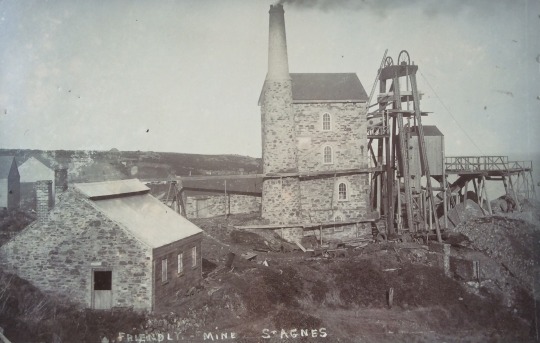
Sammy Solway – Wheal Friendly Mine, 1905
The Wheal Friendly Mine in Cornwall was a small tin mine at St Agnes which formed part of the more famous and rich Wheal Kitty tin mine. It was operating prior to 1863 but was out of use and abandoned by 1930. Below it is imagined when working from a 1966 Match box cover.
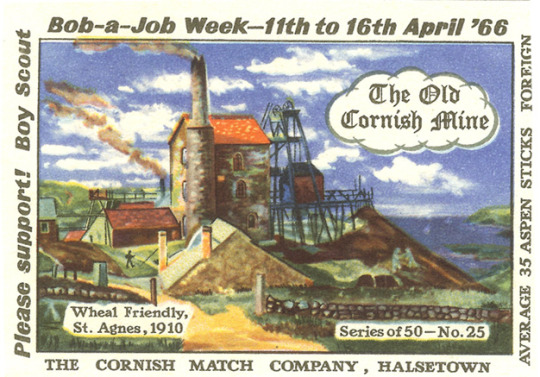
Below is a photograph of the mine by John Piper taken when he was researching the Shell guide for Cornwall. It is a romantic ruin but also looks like an outpost for Mars.
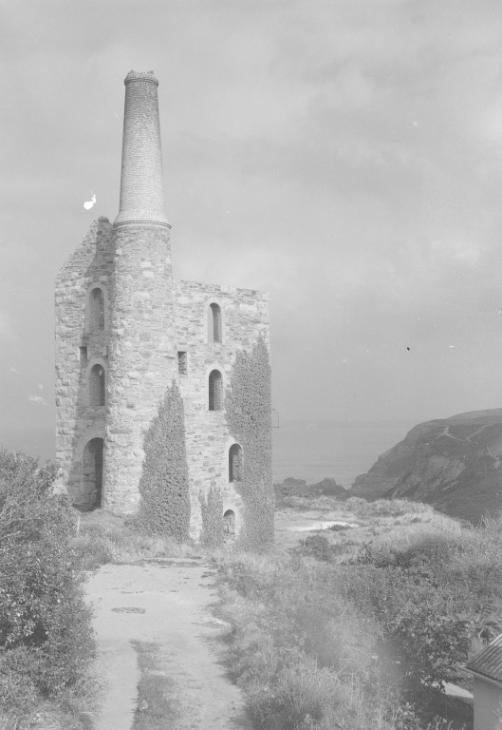
John Piper – Wheal Friendly tin mine engine house, St Agnes, Cornwall, 1933
The last picture is a painting by Olive Cook for the Recording Britain project. For Olive Cook it is a rather lovely watercolour.
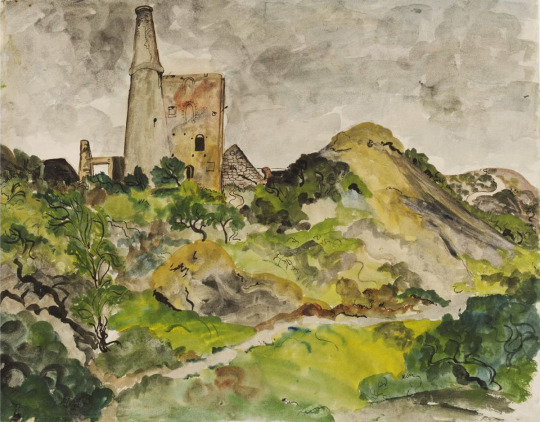
Olive Cook – Tin Mine, St. Agnes, North Cornwall c1940.
The intention is to lead the spectators eye over the canvas surface by an intentional redistribution of the tones and colours of nature and into the picture by the same means plus a reorganisation of the main planes of nature. But that of course is any serious painters job. ‡
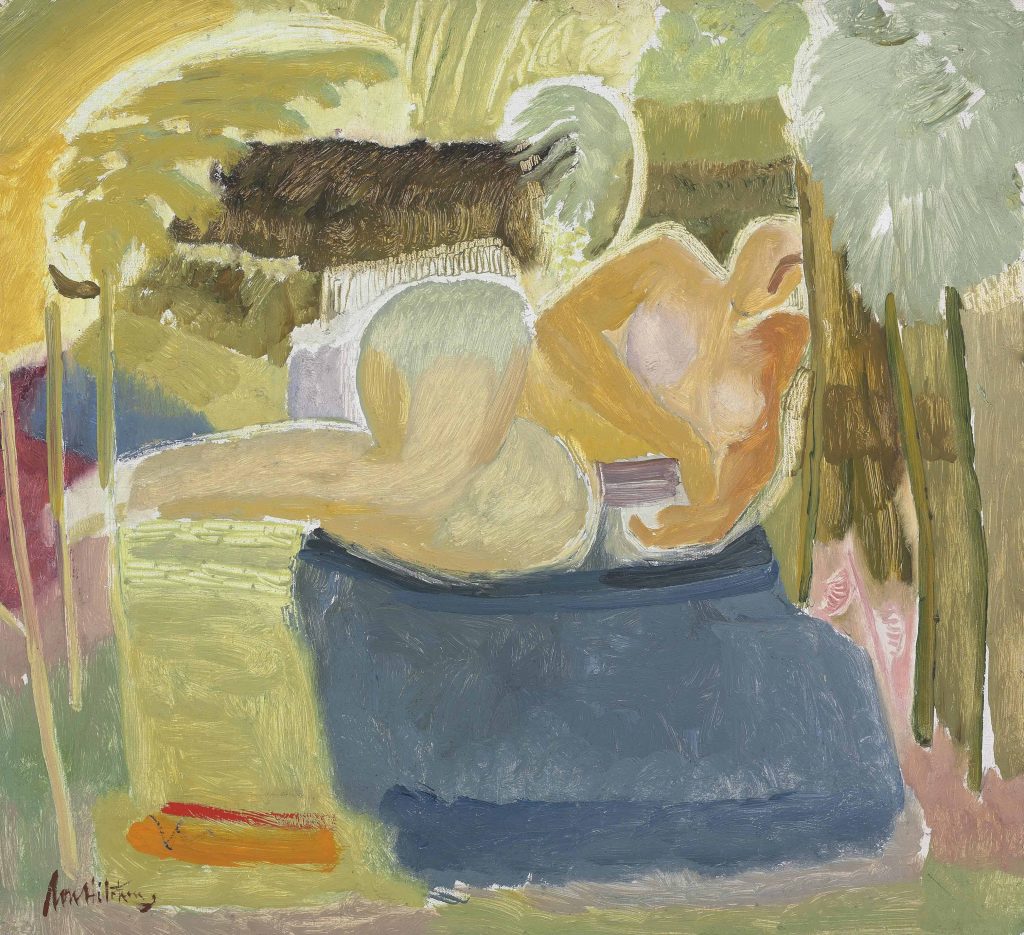
Ivon Hitchens – Sizewell Figure among Bracken, 1935
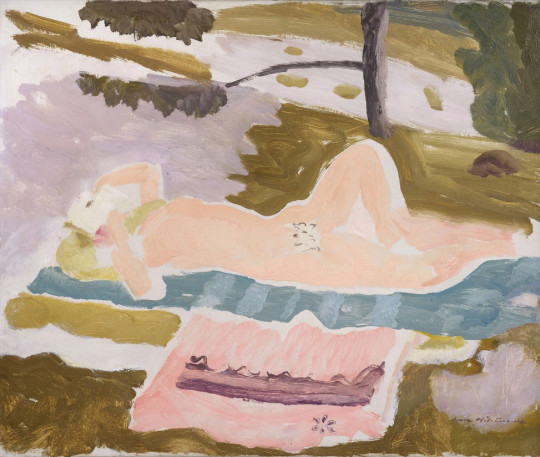
Ivon Hitchens – Sleeping Figure with Book – Sizewell, 1934
When most people talk to me of Sizewell in Suffolk they either think of the nuclear power plant or of Maggi Hambling. But many artists used this sleepy town as a place to paint from. Walter Batley painted the coast and lanes of Sizewell and Dunwich. John Barlow Wood painted the fields and views of the rivers in watercolour. Then in the 1930s Ivon Hitchens rented himself a cottage as an escape from London.
Hitchens was born in London in 1893. His father was the portrait painter Alfred Hitchens. Ivon studied first at St John’s Wood Art School in 1911 and then the Royal Academy Schools from 1911-12, again from 1914-16 and finally 1918-19. Hitchens was elected a member of the Ben Nicholson vision of the Seven and Five Society in 1920, exhibiting in all its exhibitions until 1935. Hitchens also exhibited with the London Artists’ Association, the London Group, and the Society of Mural Painters. After leaving Suffolk his final move was to West Sussex in 1940 after his Hampstead studio was bombed in the Blitz.
During his time at Sizewell on the Suffolk coast he painted various landscape paintings. Some of these came with paintings of his new wife Mary (Mollie) Cranford Coates.
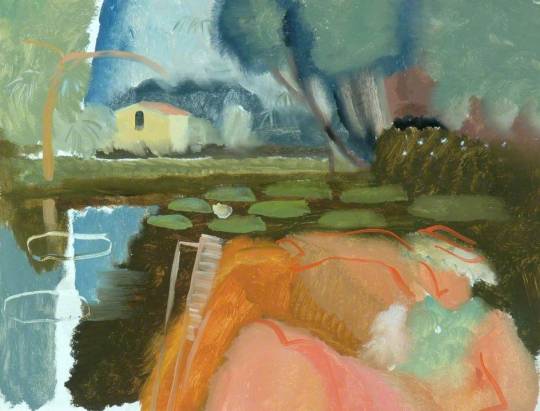
Ivon Hitchens – River Scene at Holbrook and Molly in a Boat, 1938

Ivon Hitchens – Haystacks – Suffolk, 1933
He painted views of the Stour Valley whilst staying with artists Ida and Blair Hughes-Stanton at either Higham – Stratford St Mary near Dedham.
He married at Hove, Sussex in 1935, Mary Cranford Coates and honeymooned at Sizewell. Towards the close of the 1930s, when Hitchens had ended a brief flirtation with abstractism, painting ‘Holbrook Pools’ to the south of Ipswich and a ‘Path Through the Wood’ during his stays on the Shotley Peninsula that his Suffolk stays ended.
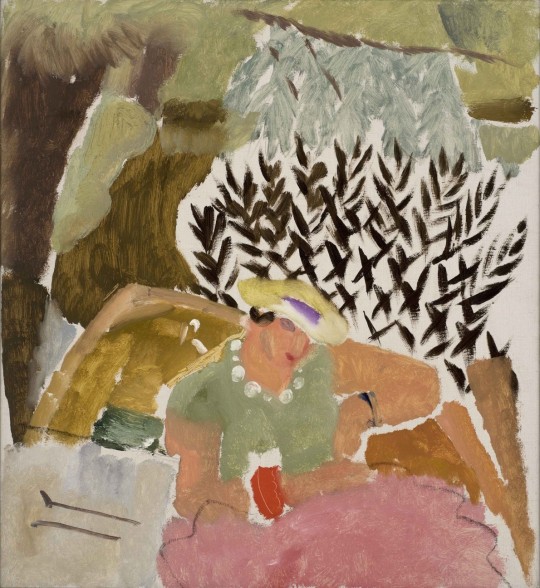
Ivon Hitchens – Boating Suffolk, Betty Bedford, 1934
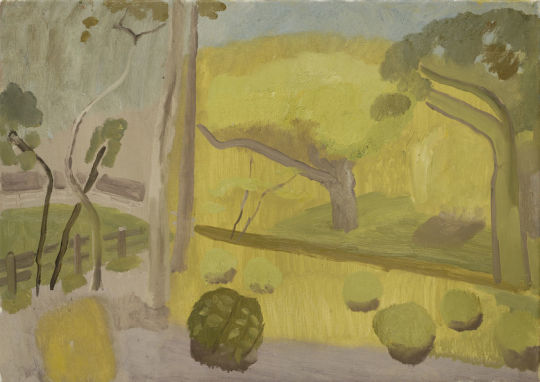
Ivon Hitchens – View from a Suffolk Garden, 1934
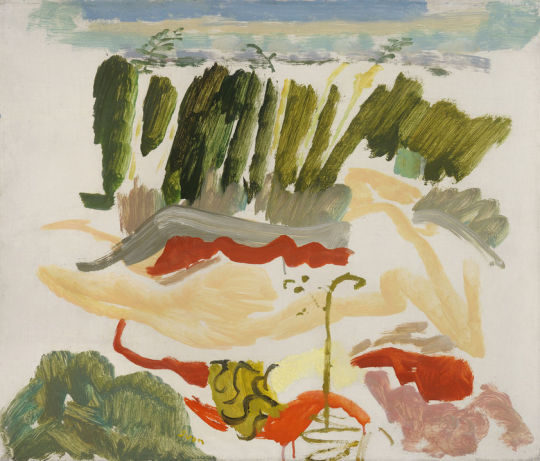
Ivon Hitchens – Nude, Sizewell, 1935
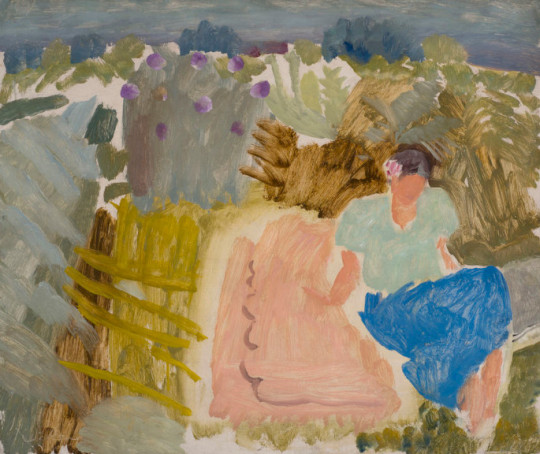
Ivon Hitchens – Girl on a Pink Rug, Suffolk, 1935
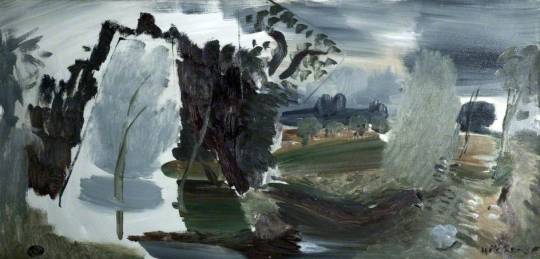
Ivon Hitchens – Landscape in Essex, 1945
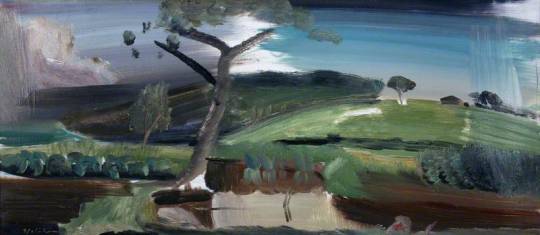
Ivon Hitchens – Essex River and Greenhill, 1946
She had been invited down to Suffolk to stay for the weekend with Ivon Hitchens, who had rented a cottage on the beach at Sizewell (before the days of nuclear energy); he wanted to make some drawings of her. John Piper, who was already a friend of Hitchens, although ten years his junior, was already staying there, and he came to meet her off the train at Saxmundham. †
The quote above may be at odds with an account it was Leiston station Piper picked her up from. Pedantic, but I can’t find a definitive source. Below is a painting of a balcony in Cambridge, the house of his friend Jack Murray.
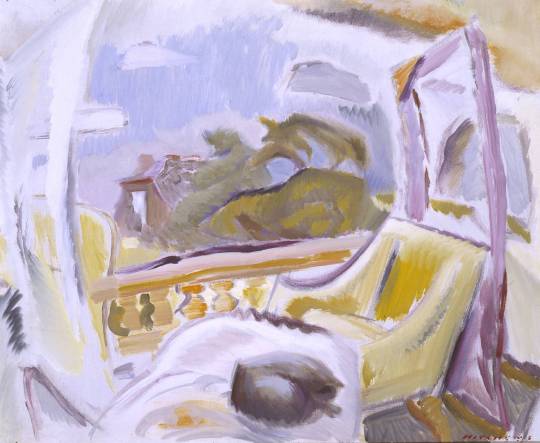
Ivon Hitchens – Balcony at Cambridge, 1929
Ivon’s son is a painter too, John Hitchens. John’s son is also an artist – Simon Hitchens.
† June Osborne – John Piper and Stained Glass, 1997 p36
‡ Ivon Hitchens to John Maynard Keynes, 27th Nov 1940

The boom in interwar printmaking in Britain was immense, it followed the same popularity of books; naturally the process of colour printing and printmaking where not so dissimilar. People were owning their own homes and they wanted affordable art to put inside.
In the 1920s and 1930s you could either source prints from the Studio Magazine or companies like the Medici print company but then came a series of print publishers who were issuing prints by contemporary artists, not from the past. The first major series of lithographs of modern artists for the public to buy would have been the Contemporary Lithograph series of prints. It was them who started the ball rolling in 1937 and proving that large colour reproduction prints could be made and sold cheaply. Sadly it, like all of the others I will list, were not a financial success. The early print schemes had aspirations of making art more affordable for people. The AIA series was a source of fund-raising for the group and showed off art from their members. The Schools Print series would have likely worked out if it wasn’t for the difficult third series from European artists. But with Lyons Lithographs the public may have felt a little saturated.
Lyons and Guinness both used the idea to their advantage when they needed to brighten up their shabby looking teahouses and pubs in an era of post war austerity.
- Contemporary Lithographs Ltd – 1937-38
- AIA Everyman Prints – 1939 – 1942
- Schools Prints – 1945 – 1949
- Festival of Britain Print Series – 1951
- Coronation Print Series – 1953
- Lyons Lithographs – 1947 and 1955
- Guinness Lithographs – 1956 – 1957
The Penguin series was unusual in that all the prints where old and not designed to be prints for the scheme. It is why they are auto lithographs. The choice of the works were down to Kenneth Clark and it is a curious selection of traditional art and abstract works. The only work I really question is Pieter de Hooch – Courtyard in Delft at Evening- a Woman Spinning, 1656. It is not a picture I can think would hang easily anywhere.
The prints were presented in folders with a size of 13¼” x 17″. Each folder also contained information on the artist and the painting/work of art.
Only 11 prints were produced before Penguin ended the scheme. The first Print was by Turner and appeared in December 1948. The last print was published in April 1952. Below are the works from this long forgotten scheme.
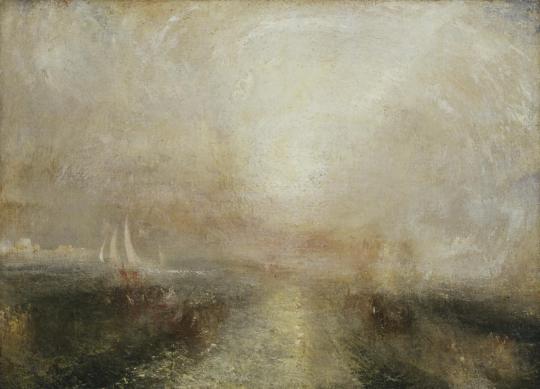
J. M. W. Turner – Yacht Approaching Coast, 1840
Turner painted this view c1840-5 and it was published by Penguin in December 1948. PR1.
In this painting the light in the sky and on the sea dazzles the viewer, obscuring the scene. This visual effect echoes the progress of Turner’s own work on the painting as he returned to areas of the canvas over a period of several years, covering the original subject. Dark shapes that appear through the layers suggest boats, while the buildings on the left have not been definitively identified but may represent Venice. By reworking the canvas, Turner has created less tangible subjects – those of light and colour themselves.
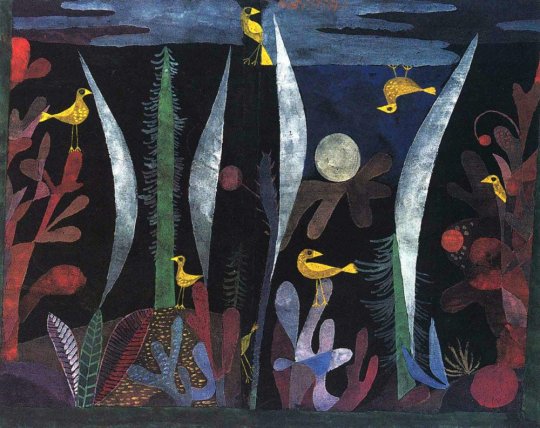
Paul Klee – Landscape with Yellow Birds, 1923
It was published by Penguin in December 1948 PR2
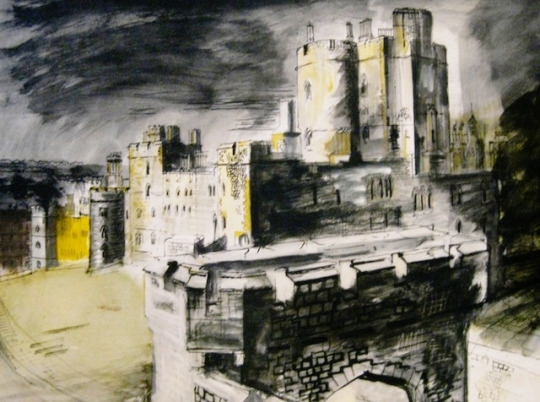
John Piper – View of Windsor Castle, 1940
The John Piper painting was originally made in 1940-41. It was published in 1948. PR3. A blog post about his work at Windsor can be found here.
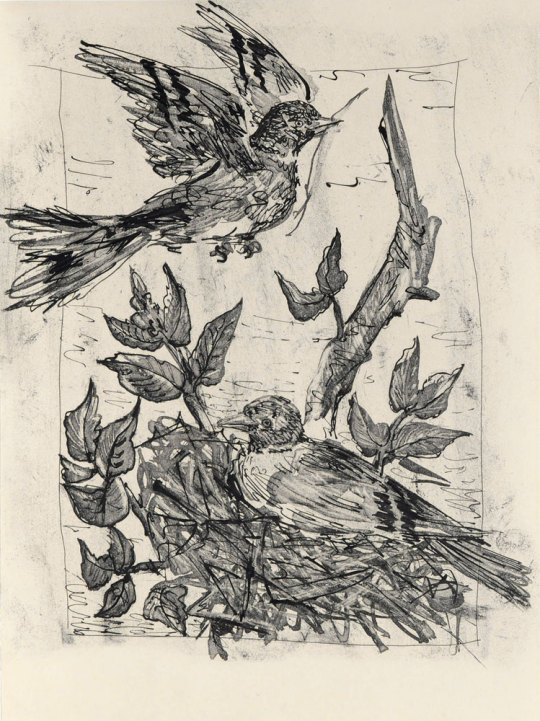
Pablo Picasso – Le Chardonneret, 1936
This print is from Picasso’s series of illustrations for Buffon’s Natural History. The drawings were made in 1936, and that book was published in 1942. The Penguin print is from December 1948. PR4
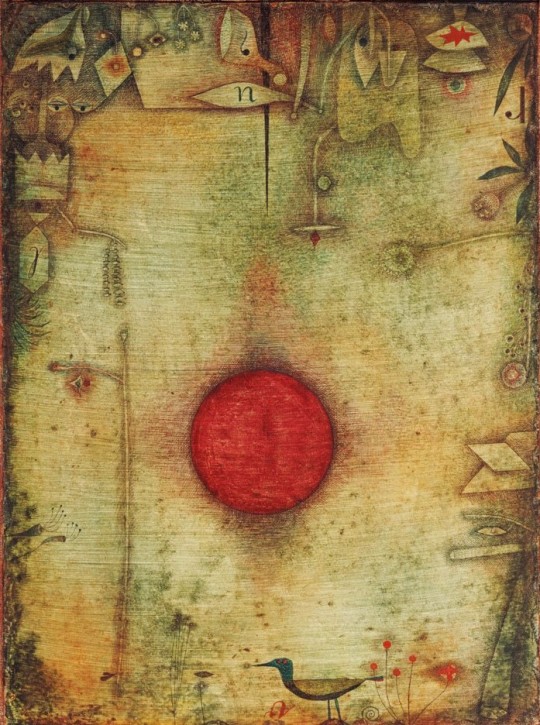
Paul Klee – Ad Marginem, 1930
Ad Marginem was painted in 1930. It was published by Penguin in May 1951.
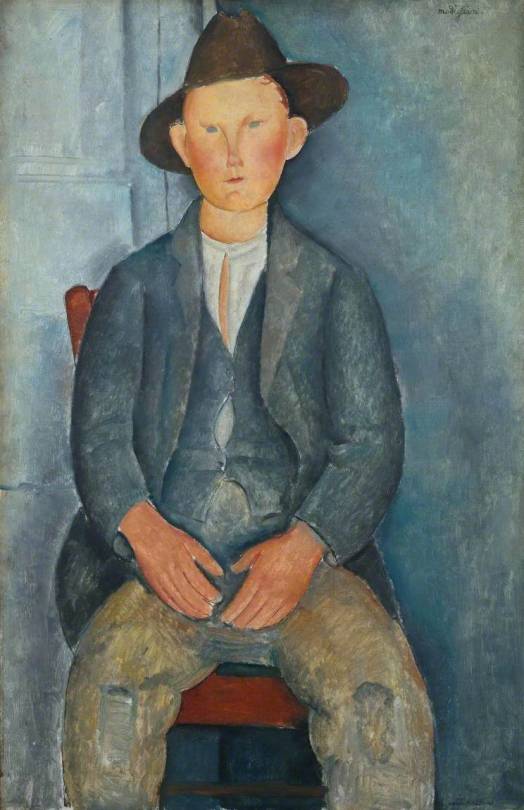
Amedeo Modigliani – Le Petit Paysan, 1918
Amedeo Modigliani – Le Petit Paysan was published as a Penguin Print in 1950.
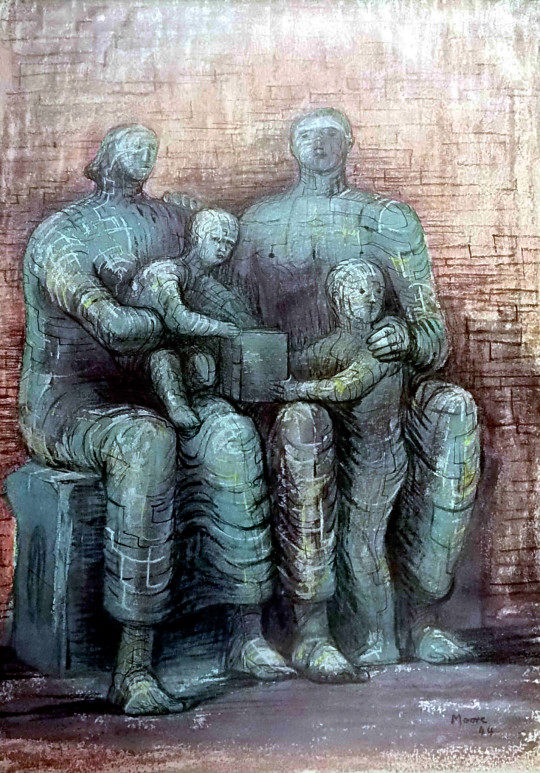
Henry Moore – Family Group, 1944
This work from 1944 looks at Henry Moore’s work earlier in the Second World War of Shelter Drawings, it is visually similar to those drawings and a sculpture he made on the theme. Towards the end of the war Moore made many drawings and sculptures of the family group.
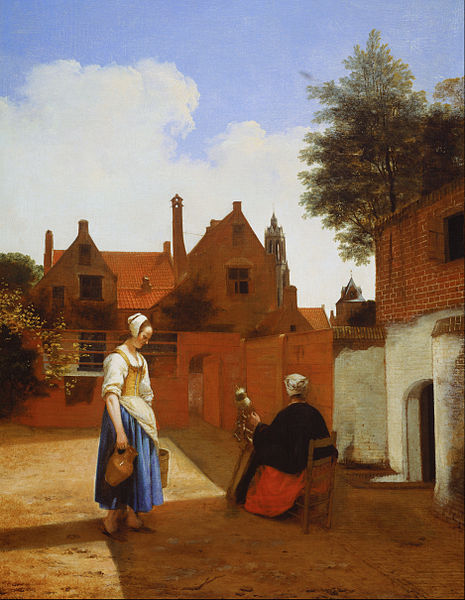
Pieter de Hooch – Courtyard in Delft at Evening- a Woman Spinning, 1656
A curiously odd picture to choose I think as it has nothing that is truly compelling to me about it. The scene is dull, the woman a little surreal but the maid with water jug looks repressed. It’s a sad image.
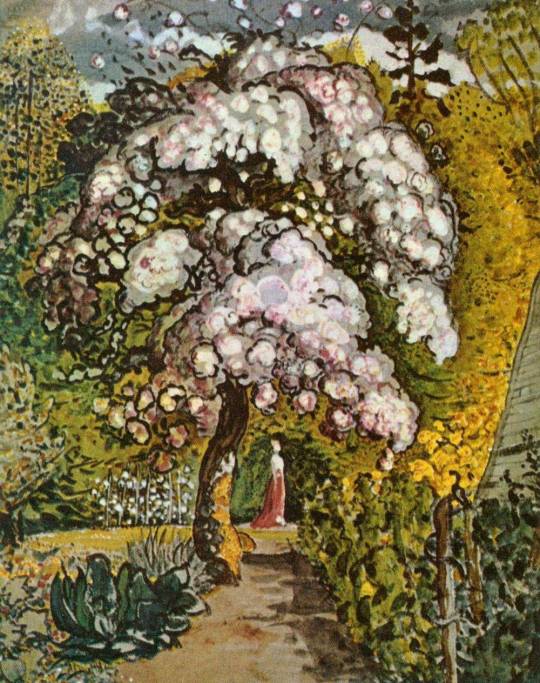
Samuel Palmer – Garden in Shoreham, c1830
An older picture here with Garden in Shoreham but it was part of the revival of interest in Samuel Palmer and his work. Both William Blake and Samuel Palmer were enjoying retrospectives at this point in time.
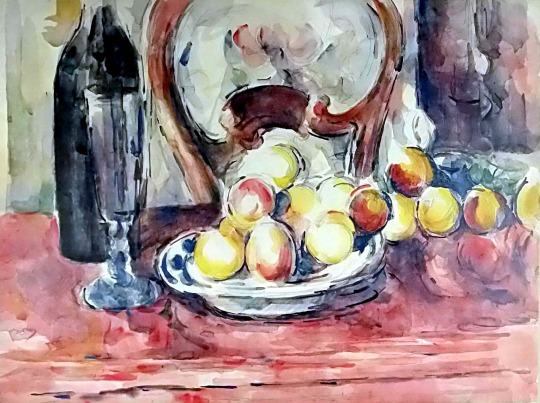
Paul Cézanne – Still Life: Apples, Bottle and Chairback. 1902-1906
One of the looser Cezanne pictures and not an oil like many of his Apple paintings. It is a lovely vibrant still life.

Matthew Smith – Still Life with Clay Figure, I, 1939
The Still Life with Clay figure was part of a series of works Smith made in the same studio space, all rather different to each other. This was the final Penguin print before they abandoned the scheme in 1952.
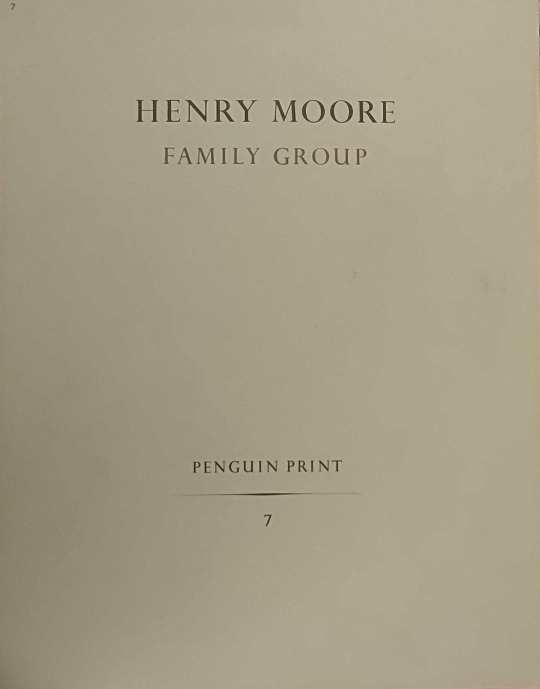
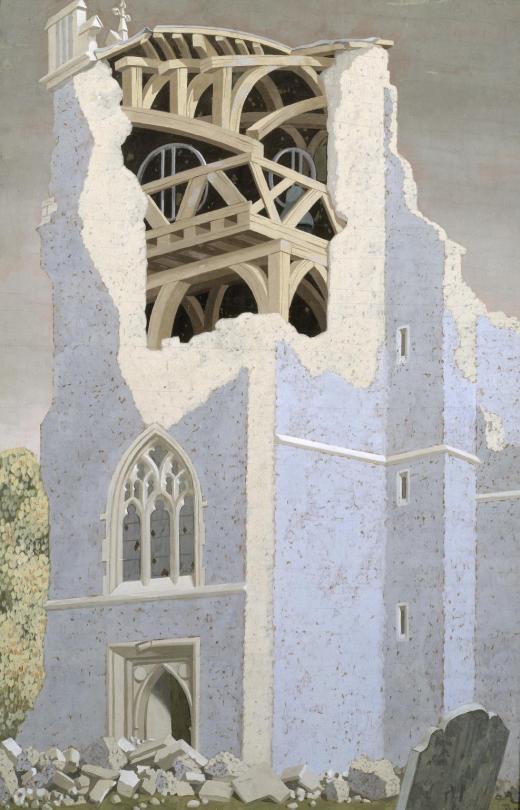
John Armstrong – Coggeshall Church, Essex, 1940 – Tate – Not on Display
When most people think of artists and where they paint – they think of St
Ives, Cornwall. The new Tate gallery there and its controversial Stirling Prize nominated extension have been both a help and hindrance to locals, but maybe not the 24% of those in St Ives who are Second Home owners †. The same could be said for Margate and the Bilbao effect from the Turner Contemporary Tate Gallery there. The Tate has pushed tourist through Margate’s streets like air into lungs. In the East of England is where many of the country’s best loved artists lived, but sadly the East of England is rather poor when it comes to showing off their artists – so why not a branch of the Tate in Aldeburgh or Southwold or Colchester?
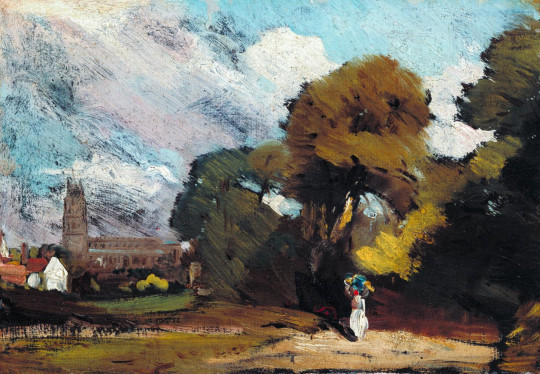
John Constable – Stoke-by-Nayland, 1811 – Tate – Not on Display
The famous East Anglian artists of old are John Crome, Thomas Gainsborough and John Constable. Crome was the most famous of the Norwich School of painters who were inspired by painters like Jacob van Ruisdael and the Dutch style. They painted the vast waterways, windmills and dykes of the fenland and Norfolk Broads. Crome also had many talented pupils. John Sell Cotman, one of the country’s best watercolour artists, was also part of this brew.
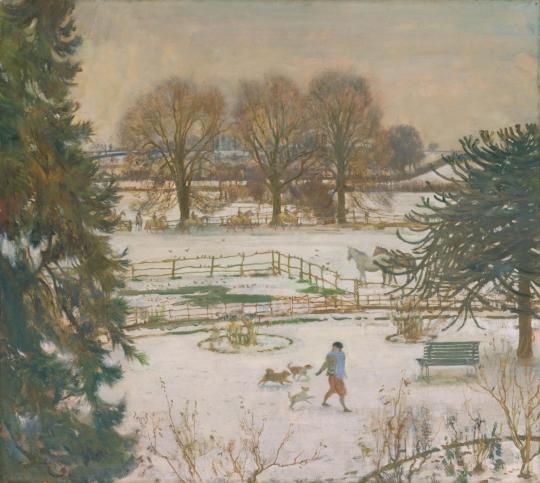
Alfred Munnings – From My Bedroom Window, 1930 – Tate, Not on Display
John Constable painted the Dedham Vale in Suffolk and, most famously, Flatford Mill. A brisk walk away is the Museum and former home of Alfred Munnings. Also in Dedham was the original home of Cedric Morris’s East Anglian School of Painting and Drawing, but when it burnt down (John Nash told Ronald Blythe ‡) Munnings drove around the village like Mr Toad shouting ‘Down with modern art’. Cedric Morris then bought Benton End from Alfred Sainsbury in 1939 and continued his art school with his life partner, Arthur Lett-Haines. Lucien Freud, Maggi Hambling, Lucy Harwood, Valerie Thornton and Olive Cook all studied there.
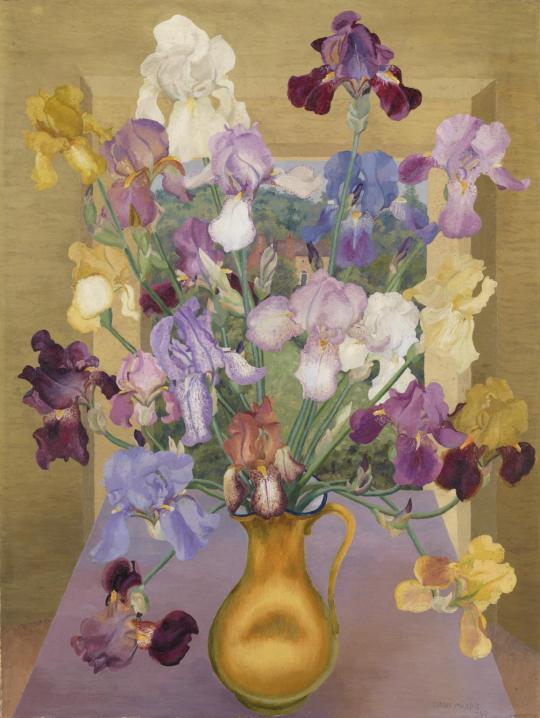
Cedric Morris – Iris Seedlings, 1943 – Tate – Not on Display
In 1940 after his London home suffered bomb damage, the sculptor Henry Moore made his home in Perry Green, just south of Much Hadham. It is now a museum with a collection of his works in the grounds. Moore walked around the local fields picking up pieces of flint thrown aside from ploughing and in his studio he would draw them as pre-made organic sculpture. Moore called them his ‘library of natural forms’ and they would inspire his larger works.
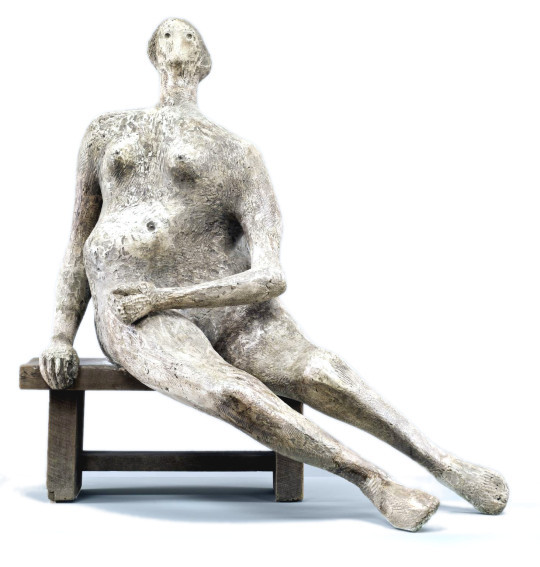
Henry Moore – Seated Woman, 1957 – Tate – Not On Display
John Piper in the 80s made a beautiful series of ruined churches of East Anglia. In 1934, at Ivon Hitchens cottage in Sizewell, Suffolk, Piper met his wife Myfanwy Evens. They married in 1937. Myfanwy worked with Benjamin Britten writing lyrics to his operas including Death in Venice. Britten lived in Aldeburgh with his partner Peter Pears. Piper would design many of the stage sets.
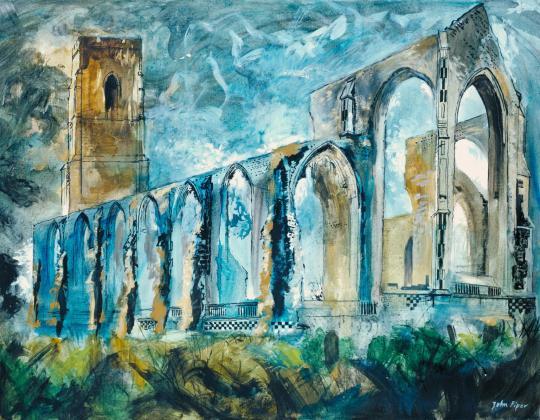
John Piper – Covehithe Church, 1983 – Tate – Not On Display
On the other side of Colchester in 1944, war artist John Nash was restoring the Elizabethan Bottengoms Farm, moving in with his wife Christine Kühlenthal. Christine had studied at the Slade school of art alongside Dora Carrington, Mark Gertler and she worked at the Omega Workshops while John had become famous for his monumental paintings of the First World War alongside his brother Paul. At Bottengoms, John became famous for his landscape paintings and botanical studies. He taught at Colchester School of Art with Richard ‘Dickie’ Chopping, an artist known for his dust jackets for Ian Fleming’s James Bond series. Dickie lived with his lover, another landscape painter, Denis Wirth-Miller. Their life with Francis Bacon has been expertly documented in Jon Lys Turner’s ‘The Visitors’ Book’. Bacon owned a home in Wivenhoe as did Dickie and Denis.
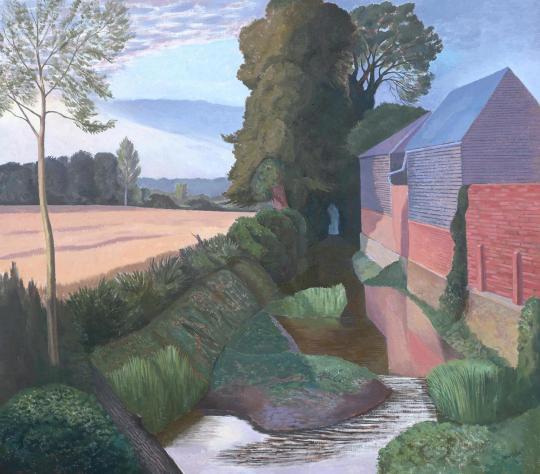
John Nash – Mill Building, Boxted, 1962 – Tate – Not On Display
Also on the staff at Colchester was John o’Connor, a wood-engraver and landscape painter. He was once the pupil of both Edward Bawden and Eric Ravilious at the Royal College of Art. Bawden and Ravilious where renting part of Brick House in Great Bardfield, Essex, when Ravilious moved a few miles away to Castle Hedingham with his painter wife Tirzah. Bawden and his Leach Pottery student wife Charlotte bought Brick House. Both men became war artists and only Bawden returned from the conflict after painting the early war, including Dunkirk. He was also shipwrecked off the coast of Africa, rescued and imprisoned by Vichy French forces, liberated by the Americans and then off again to paint the campaigns in Africa and Iraq. Eric died in 1942 when the aircraft he was in was lost off Iceland. Ravilious used the Essex area profusely in his short life there in
wood-engravings and watercolours.
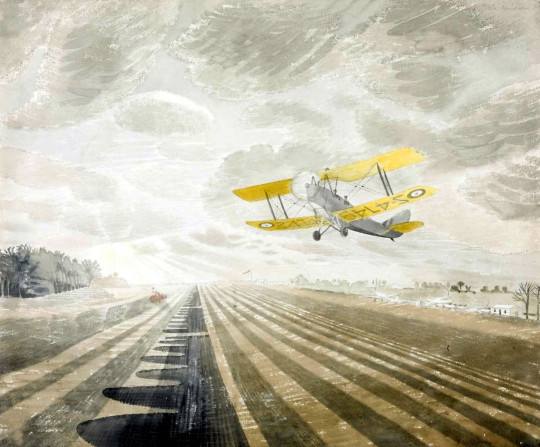
Eric Ravilious – Tiger Moth, 1942 – Tate – Not on Display
Around the village of Great Bardfield, Bawden was joined by John Aldridge (a landscape painter), Walter Hoyle (one of Bawden’s students who helped Bawden on work at the Festival of Britain) and Michael Rothenstein (the pioneer printmaker and brother to the Director of the Tate Gallery). Other artists in the village were George Chapman, Bernard Cheese, Stanley Clifford-Smith, Audrey Cruddas, Sheila Robinson and Kenneth Rowntree.
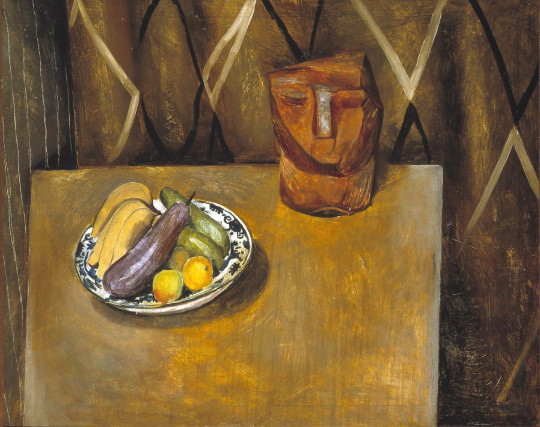
John Aldridge – Head and Fruit, 1930 – Tate – Not on Display
In the small hamlet of Landermere – on the coastland of Essex – lived Adrian and Karin Stephen with their daughter Judith. Adrian was the younger brother of Virginia Wolfe and Vanessa Bell. After her parents death Judith lived on in their house with her husband and Independent Group member, Nigel Henderson. Also in Landermere they were joined by Eduardo Paolozzi who owned one of the cottages and set up Hammer Prints Limited, a company for printing limited edition works and designing abstract home wares such as wallpapers and tiles. Neighbours in the hamlet were architect Basil Spence and Festival of Britain artist and Coventry Cathedral glass engraver, John Hutton, as well as his son, children’s book illustrator Warwick.
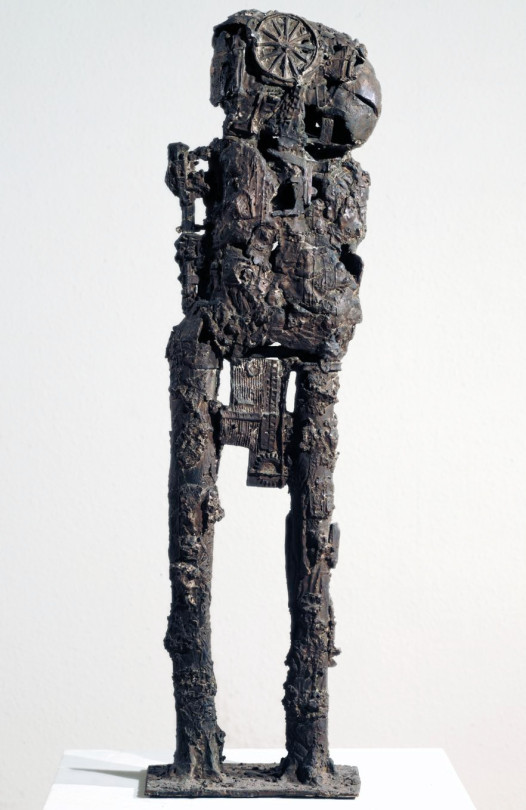
Eduardo Paolozzi – Cyclops, 1957 – Tate – Not on Display
The Stephens were not the only Bloomsbury members to be in the East. David Garnett, his lover Duncan Grant, and Grants wife Vanessa Bell were all staying at Wissett Lodge, Suffolk in the summer of 1916 as conscientious objectors, working on a farm, though Vanessa is the one who got the most painting done.
With the boom in British publishing many of these artists enjoyed illustration commissions, from the cookery books of Ravilious and Bawden to poetry books decorated by John Piper and gardening books illustrated by John Nash.
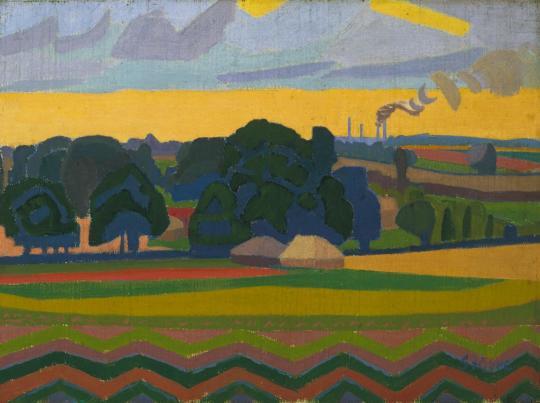
Spencer Gore – The Beanfield, Letchworth, 1912 – Tate – Not On Display
Naturally there are names left out but there are too many artists to list. But why are they so poorly represented in the region? In the East there is the Sainsbury Centre for Visual Arts and Kettles Yard but neither of these galleries aim to promote the work of East Anglian artists, but rather the international collections of the Sainsbury family and Jim Ede. They both do a lot of good for the local economy but it’s not the same as championing the area’s artists.
The nearest to it is the Fry Art Gallery in Saffron Walden, but their manifesto only lets them collect work from artists who have lived in North West part of Essex. But for all of Bedfordshire, Cambridgeshire, Essex, Hertfordshire, Norfolk and Suffolk there should be a body to represent them.
There are so many other artists that could be liberated from the Tate and their archives and put on show to support and promote the region where they were created. At the time of publishing, all the artworks in this blog owned by the Tate were not on display.
† https://www.cornwalllive.com/news/cornwall-news/cornwall-second-homes-plague-revealed-1398388
‡ A Broad Canvas – Ian Collins 1999 – From the Foward by Ronald
Blythe, p6.

John Piper – Abstract I, 1935
It is always interesting looking back at an artists work in retrospective books, the early works and the friends around them to how they sailed on into life and the work progressed. This post is about the work of John Piper and how I look at his pictures.
Piper’s art education would have been set in a landscape were the tectonic plates of traditional art education of the last 200 years met with post-impressionism and modernism from the exhibitions in 1910 and 1912 by Roger Fry and other movements like Futurism (1912), Vorticism (1914), Cubism (1910-late 20s) and Surrealism (1921-50s).
But these shocks would have been picked up and absorbed by the young artists to come and change British art in the twentieth century, people that John Piper surrounded himself whom were both artists and collectors; Henry Moore, Cedric Morris, Ben Nicholson and Barbara Hepworth where in the Seven and Five Society with Piper (he was the secretary), but also collectors and writers like Jim Ede, John Betjeman, Osbert Lancaster and Benjamin Britten and John Rothenstein.
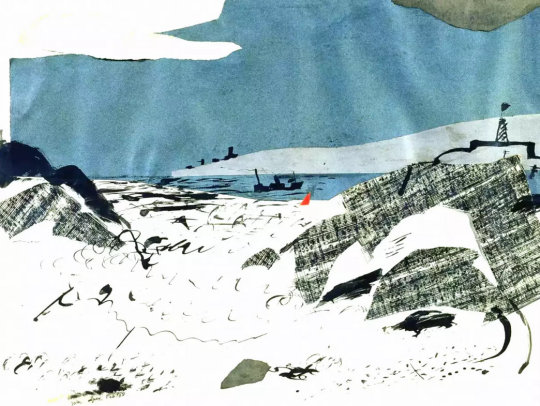
John Piper – Beach at Donegal, 1937
In the 1930s Piper was mostly active in two areas of art, collage and abstraction. The Seven and Five Society would give him a platform to showcase these works alongside other artists investigating both modernism in abstraction but form and function:
The Seven and Five Society was an art group of seven painters and five sculptors created in 1919 and based in London. The group was originally intended to encompass traditional, conservative artistic sensibilities.
However, in 1924 Ben Nicholson, one of the pioneers of abstract art in Britain, joined the Seven and Five. He was followed by other modernists including Barbara Hepworth, Henry Moore and later, John Piper. They effectively hijacked the group, expelling the non-modernists. In 1935 they renamed it the Seven and Five Abstract
Group and held the first all abstract exhibition in Britain at the Zwemmer Gallery in London.
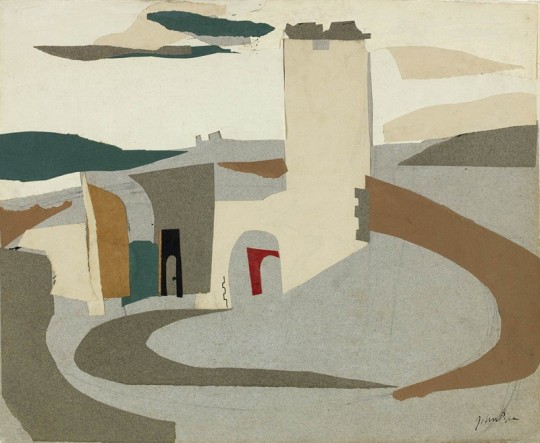
John Piper – Knowlton, Dorset, 1936
In these blocks of colour, objects could be simplified to their basic
form. A really good example of this would be Piper’s collage of
Knowlton, Dorset. With almost no ink lines it is just colour and
form. From these types of collage you get more ink washes and
drawings over the top.
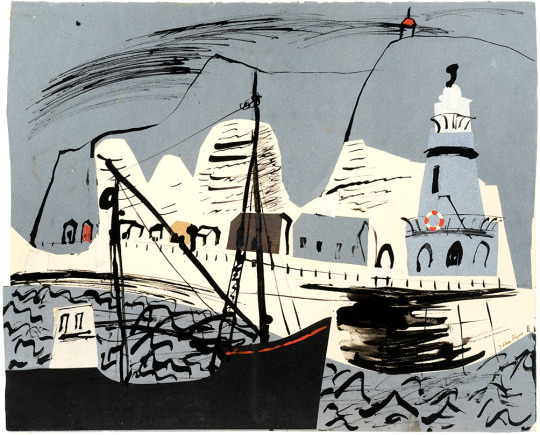
John Piper – Newhaven Harbour and Cliff, Sussex, 1936
Then when it came to returning to painting I always think that this is how Piper approached subjects, first with the base of colours and form, then the black line drawing, as if it were a trade illustration, much in the same way Raoul Dufy paints.
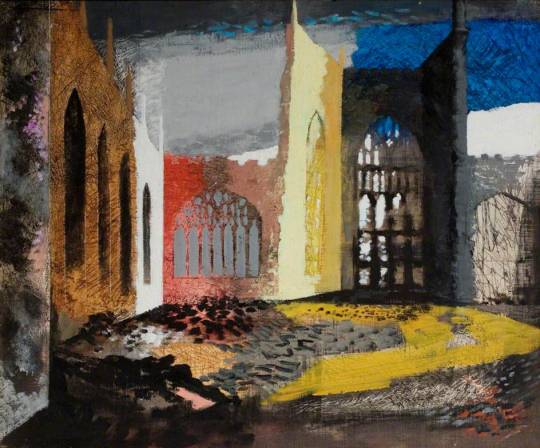
John Piper – Interior of Coventry Cathedral, 15 November 1940
It’s a technique that Piper mastered when painting in the ruins of Coventry Cathedral. – the colour in blocks with black paint for texture. It would also be the way he approached printmaking and lithography.
He also used wax resists in his paintings to keep some of the bold colours and put chalk and pastels over the paintwork too. In time he would work out the form of a painting and the resist rubber gum would leave white lines over his many washes of colour.
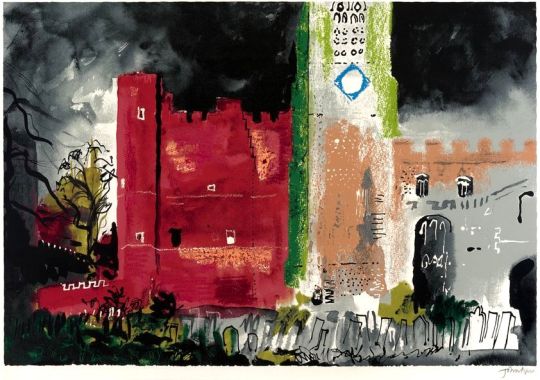
John Piper – Buckden in a Storm, 1977
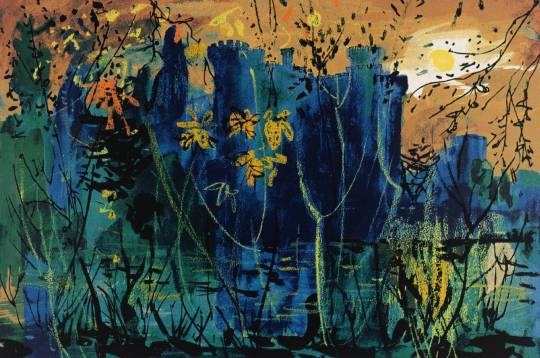
John Piper – Eastnor Castle, 1983
A trip to the Suffolk coast it is always nice, but if you don’t know it, try stopping at Covehithe church. It is placed on that part of the Suffolk coast that is crumbling slowly into the sea. Now only a field saves the church from the fate that Dunwich church suffered.
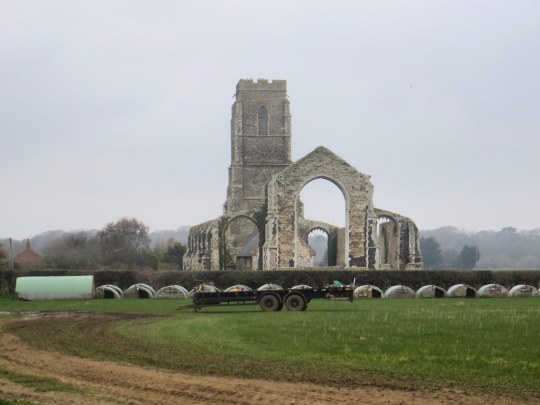
The original church is now a ruin. The oldest fabric in the original large medieval church dates from the 14th century, although most of it is from the 15th century. During the Civil War much of the stained glass was destroyed by the local iconoclast William Dowsing. By the later part of that century the large church was too expensive for the parishioners to maintain, and they were given permission in 1672 to remove the roof and to build a much smaller church within it.
This small church is still in use, while the tower and the ruins of the old church are maintained by the Churches Conservation Trust.
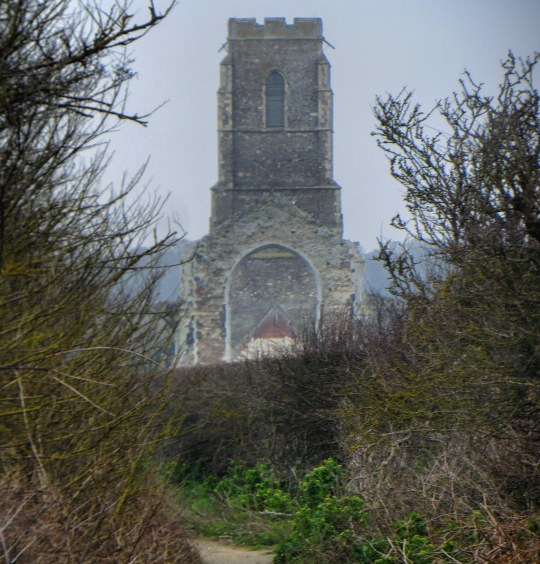
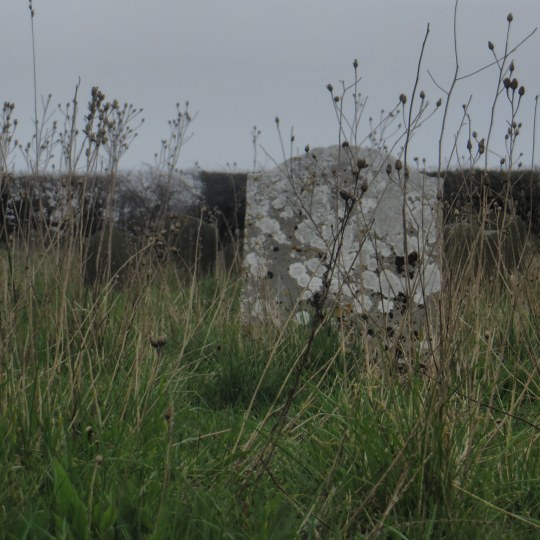
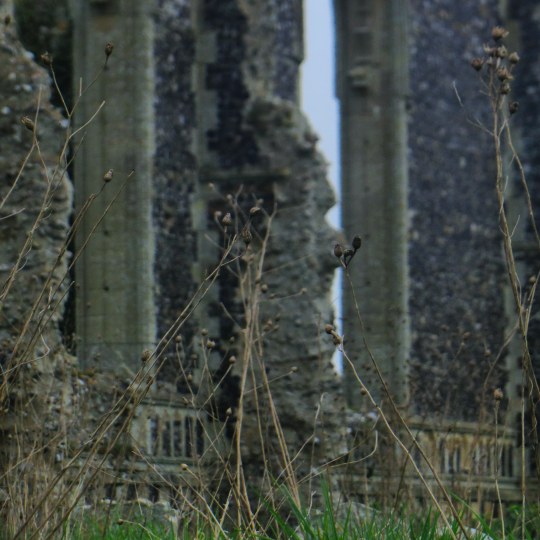
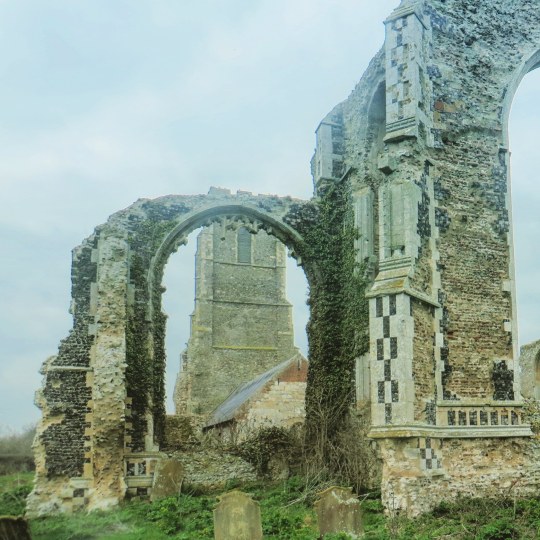
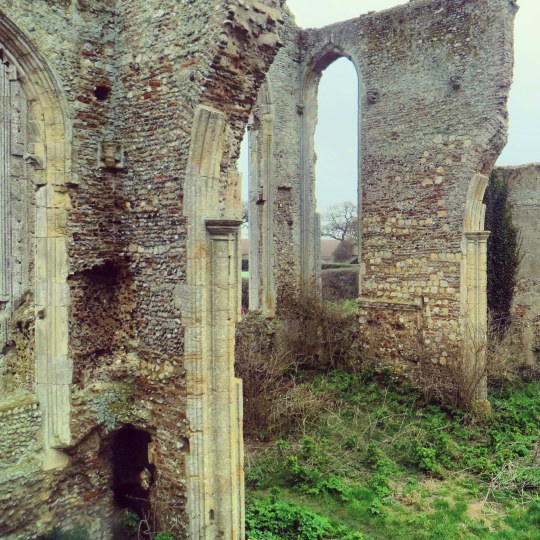
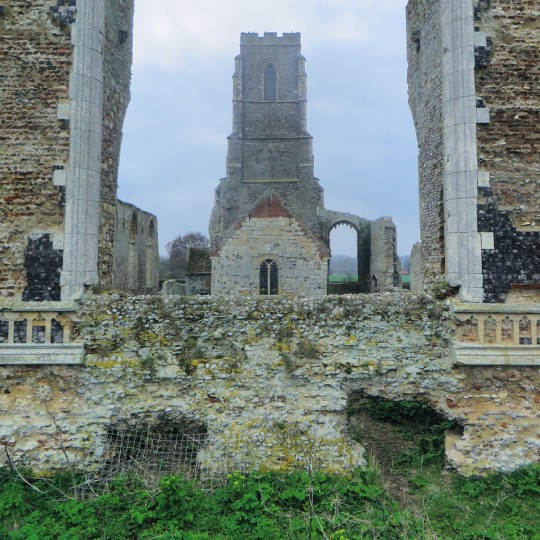
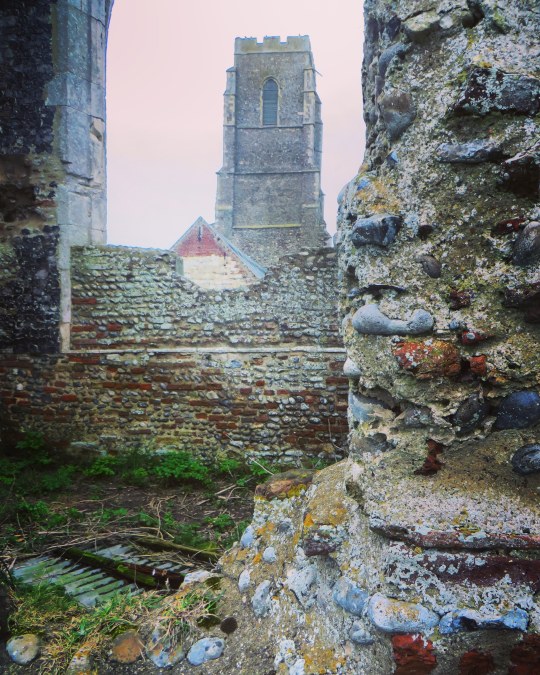
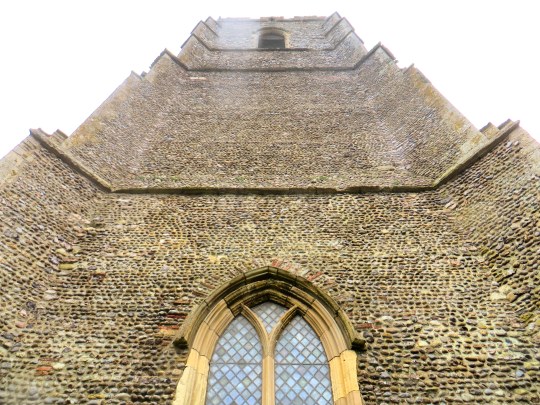
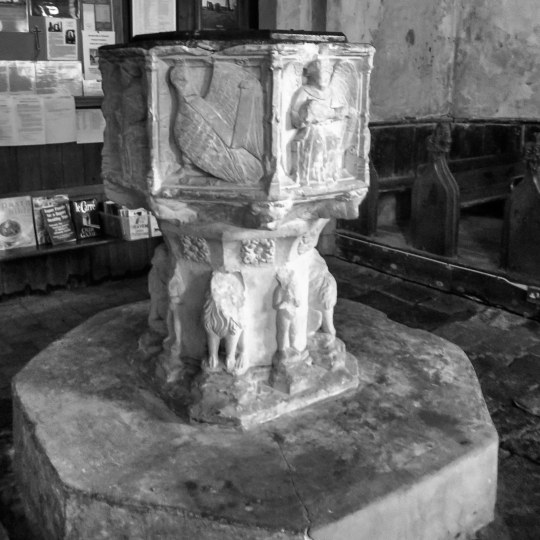
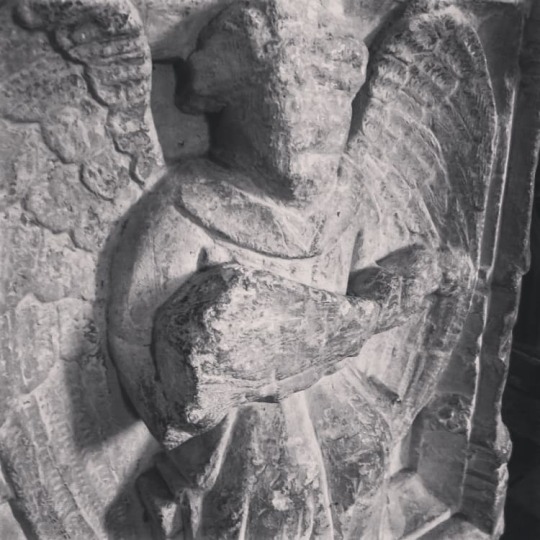
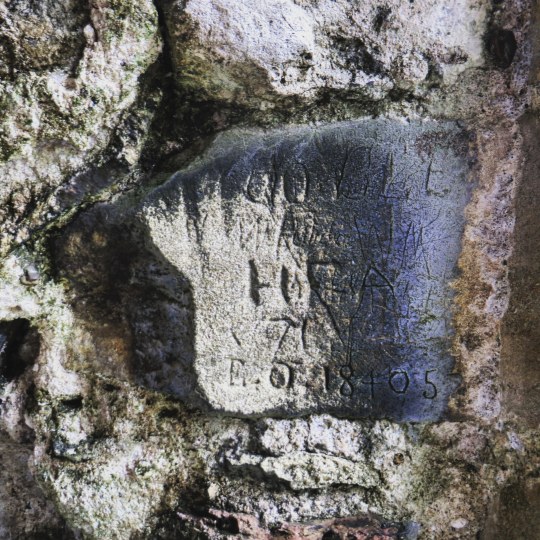
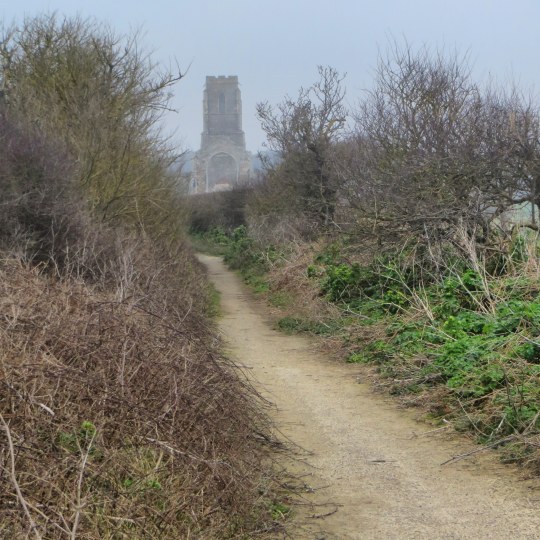
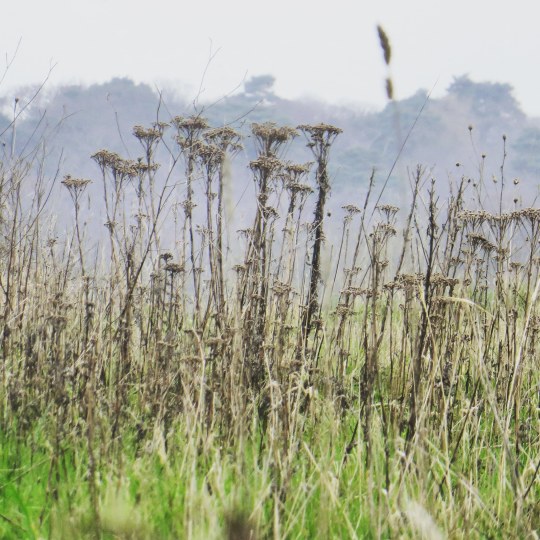
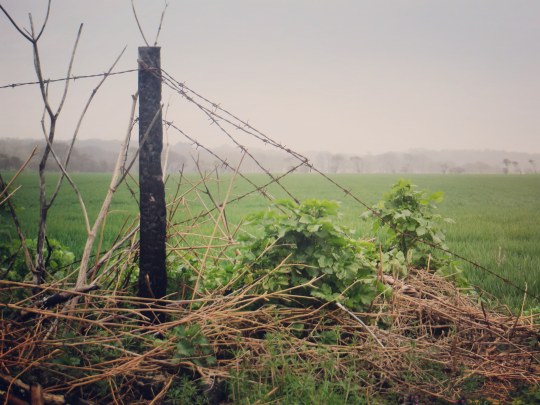
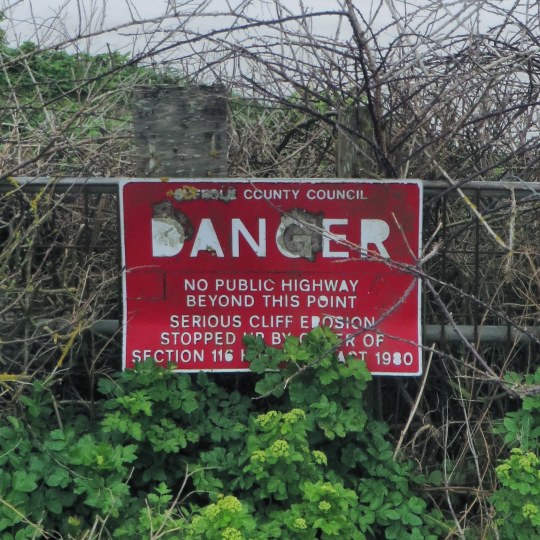
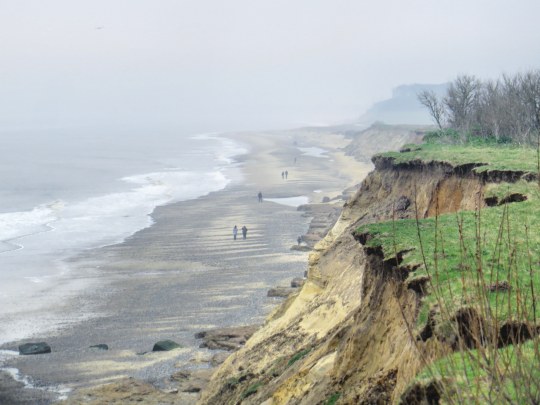
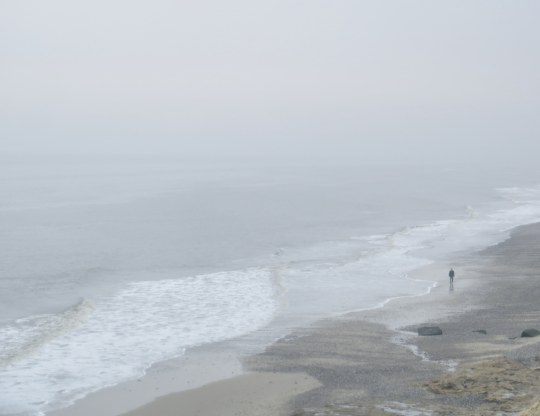
The church was painted by John Piper and Piper is shown painting it in a documentary on our Youtube channel.
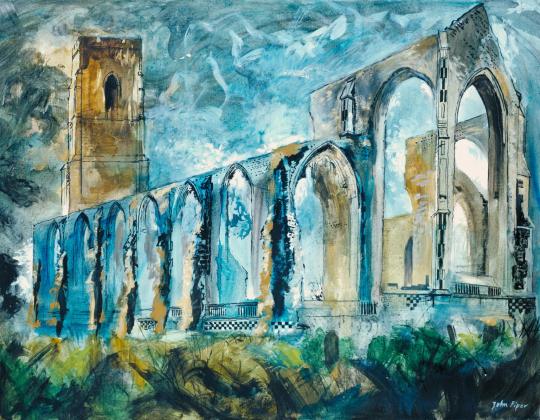
John Piper – Covehithe Church, 1983
The Puffin picture book series was inspired from various continental and Russian children’s books; as Insel-Bücherei publications inspired the King Penguin series, the Puffin books also inspired others due to the handy size for displaying information. Here are some books that are the same size but are styled in a suspiciously similar way. Some of them are a series of BBC books, others are by tea companies and the V&A.
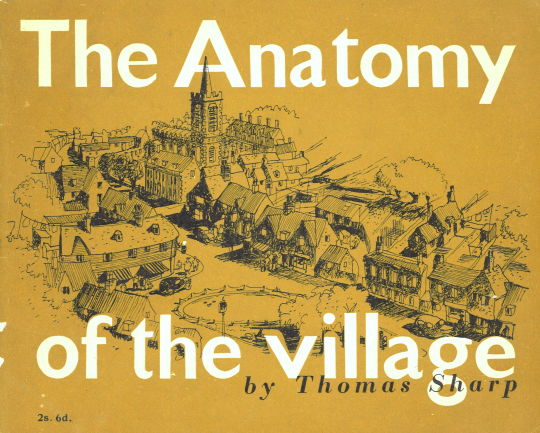
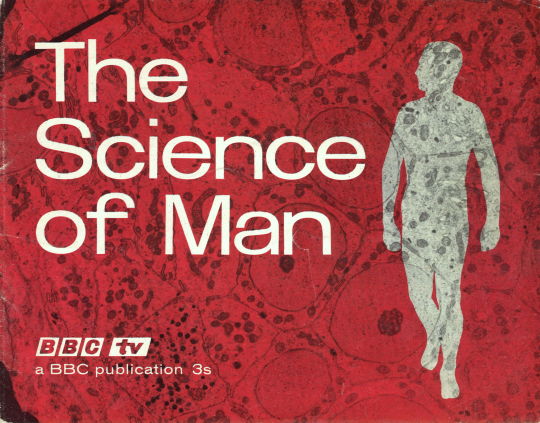
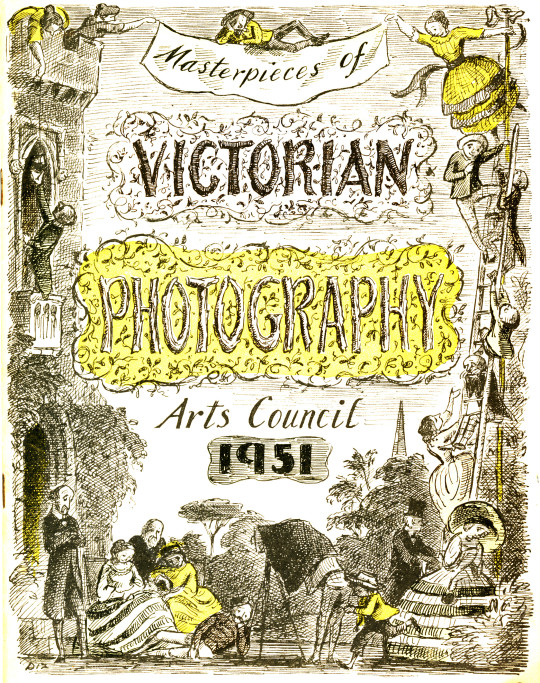

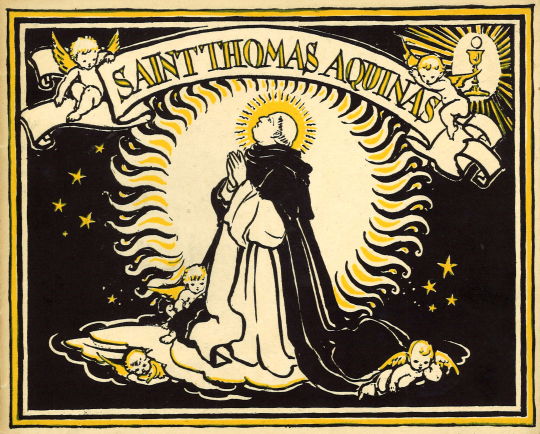
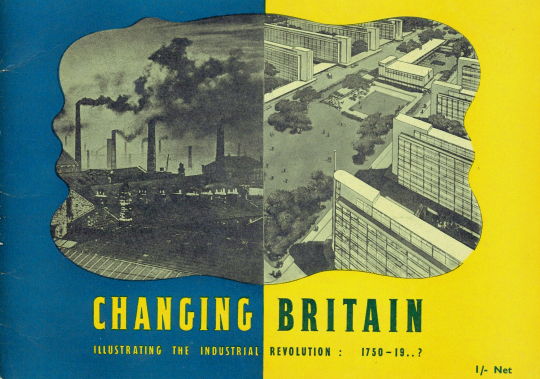
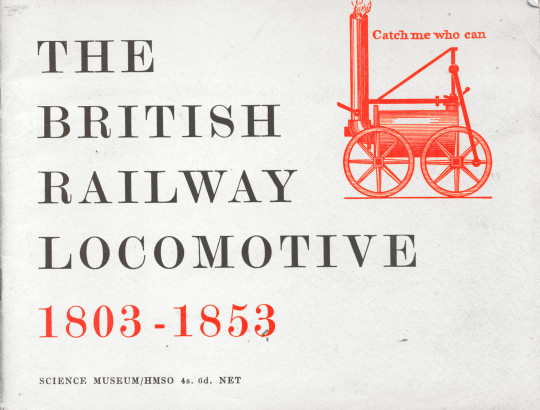
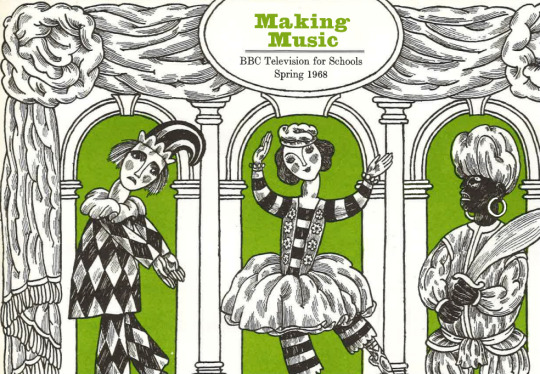

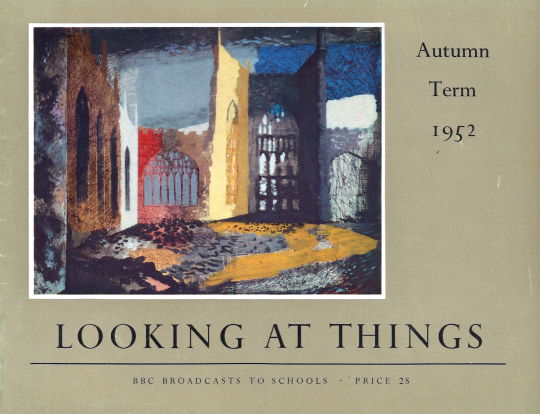
In the past week while looking at some of my books, I noticed that many of them have Ex Libris plates. I have not really thought of having such a thing myself. I always thought although decorative, in most cases they are dull and damage books – though it is nice to trace the possessions of people. Some of the bookplates you are able to Google the people involved, others it is a mystery.
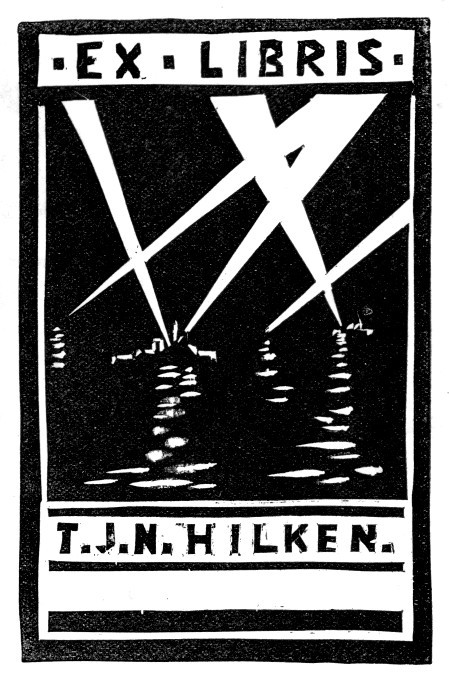
Captain Thomas John Norman Hilken, DSO. (1901-1969)
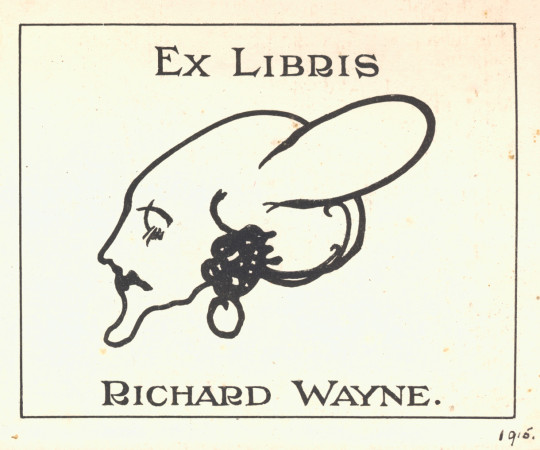
Richard Wayne. The illustration is lovely and I thought slightly Bloomsbury but I couldn’t find any mention of him.
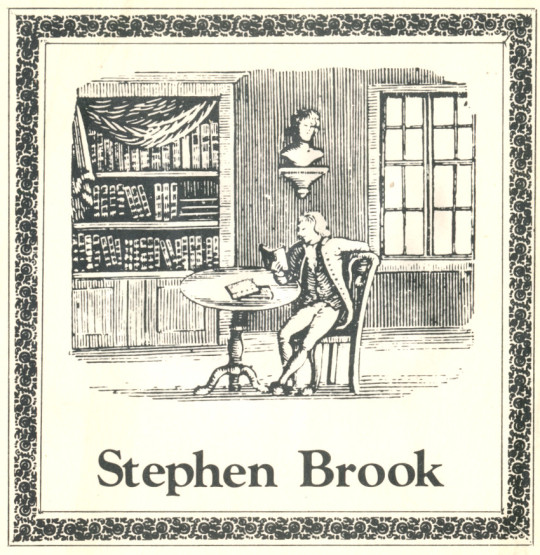
Stephen Brook
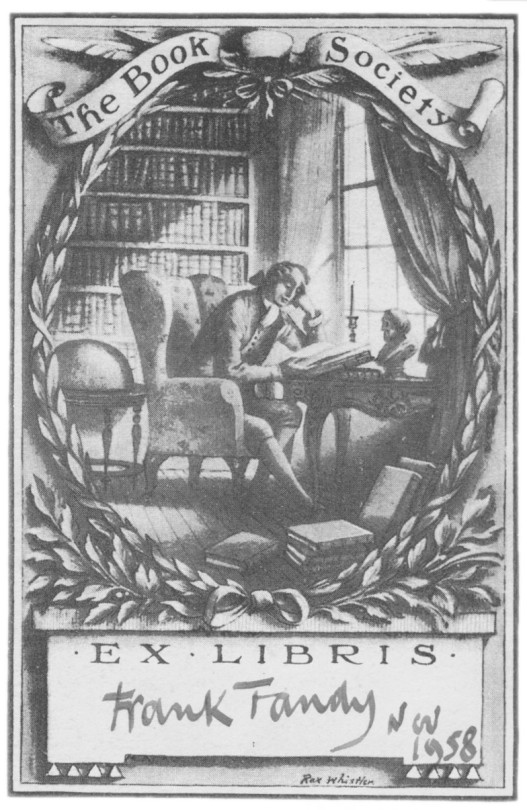
A Book Society bookplate for the public to fill in by Rex Whistler, below another design by Whistler, this time for Duff Cooper.
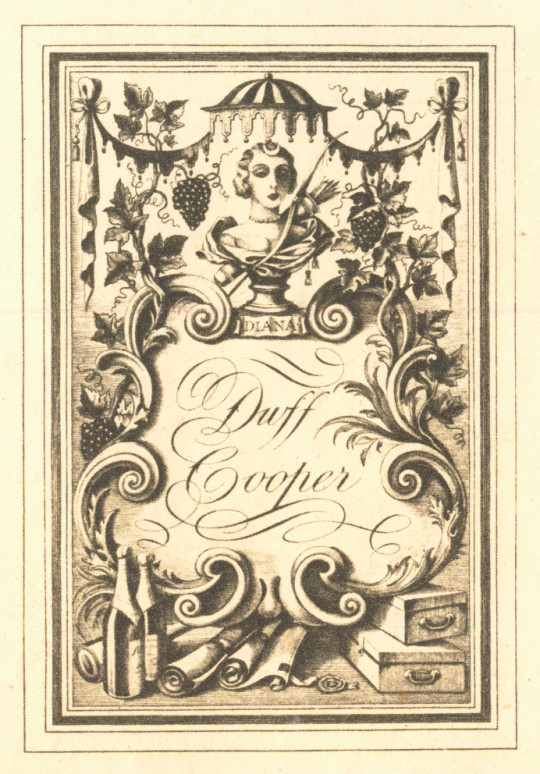
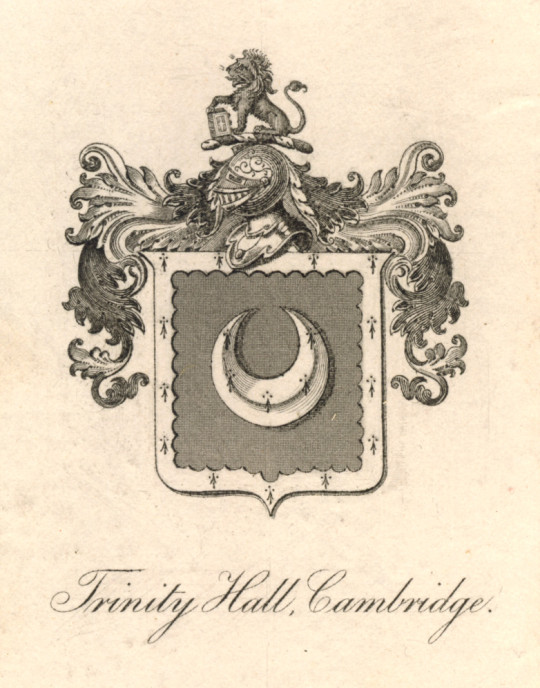
Trinity Hall Library, Cambridge
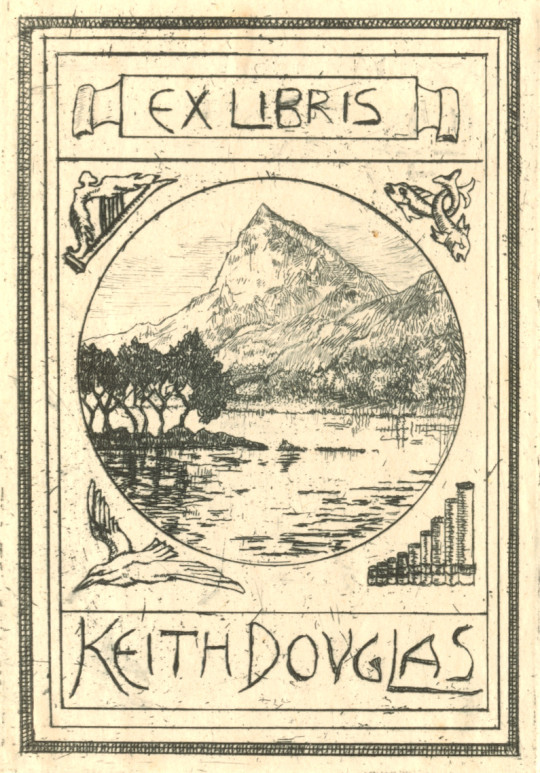
Keith Douglas – Second World War Poet.
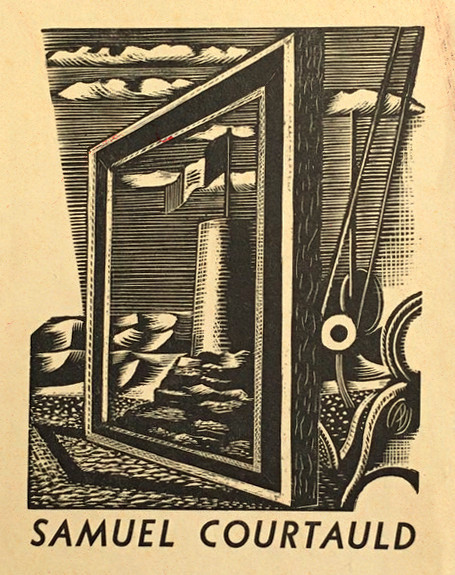
Samuel Courtauld – Art Collector and founder of the Courtauld Institute of Art. Designed by Paul Nash.
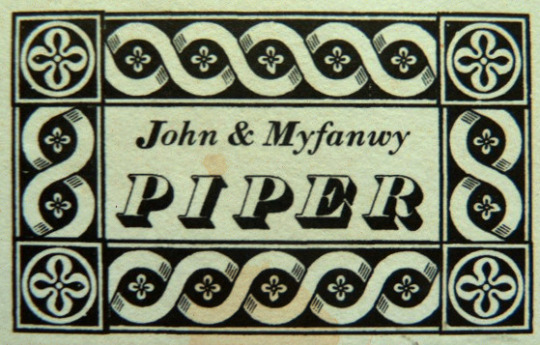
John & Myfanwy Piper – Artists and writer.
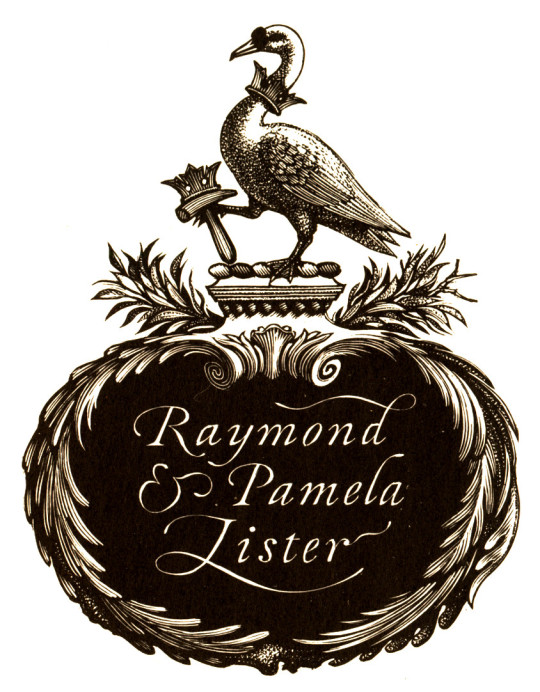
Raymond Lister – Society Ironworker and writer on Romantic Watercolourists, designed by Reynolds Stone.
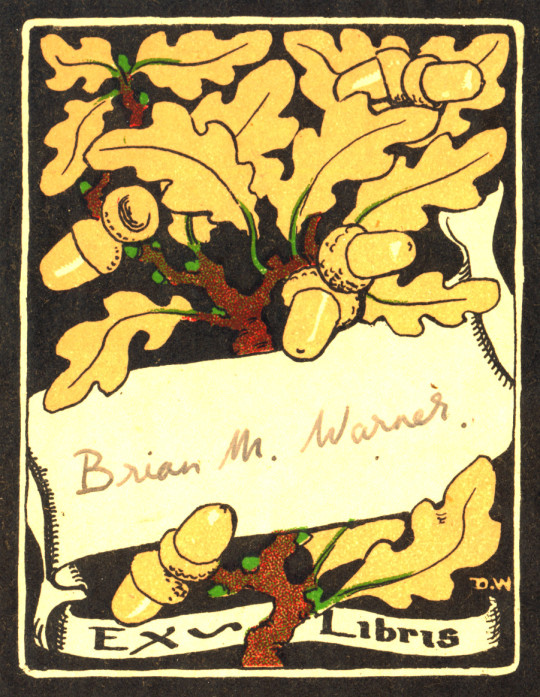
Brian M Warner. A mass produced bookplate by D.W who is unknown to me.
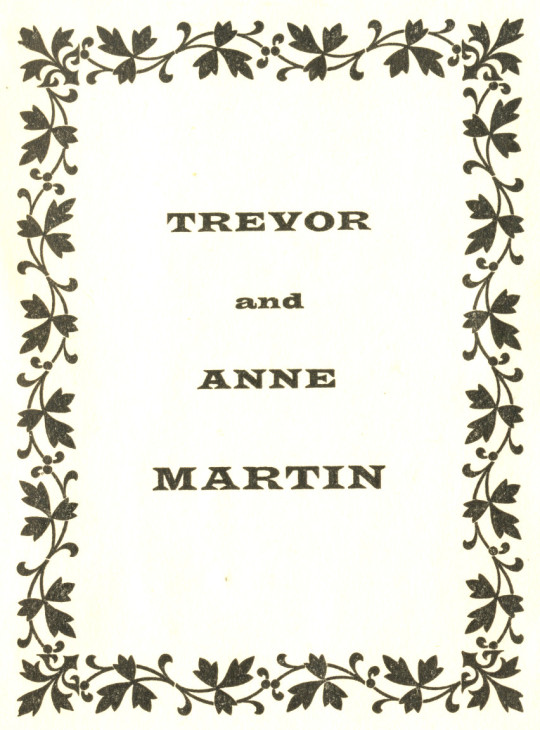
Trevor and Anne Martin
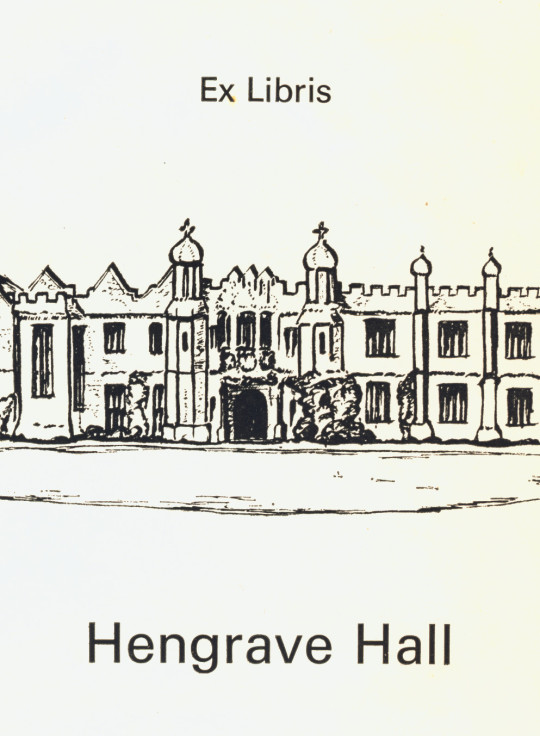
Hengrave Hall library bookplate. Hengrave Hall is a Tudor manor house near Bury St. Edmunds and has been a nunnery. It is now a wedding venue.
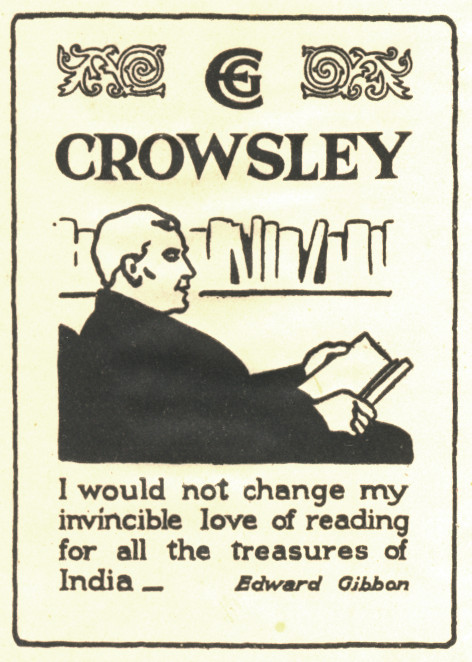
E G Crowsley.
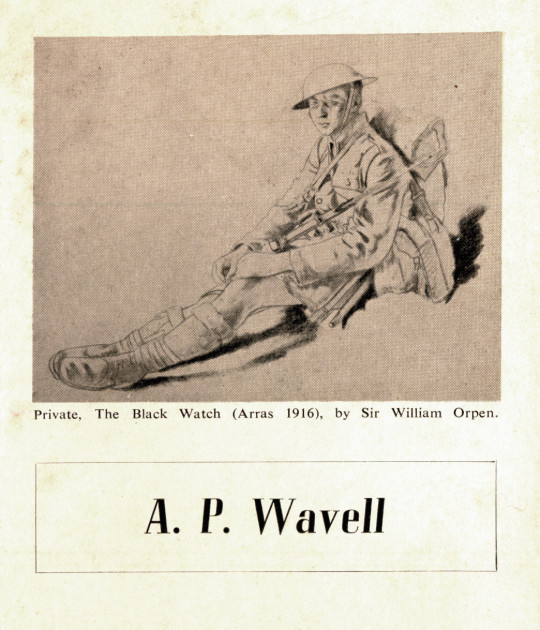
Field Marshal Archibald Percival Wavell, 1st Earl Wavell, GCB, GCSI, GCIE, CMG, MC, KStJ, PC. As noted on the plate, it features a beautiful drawing by William Orpen.
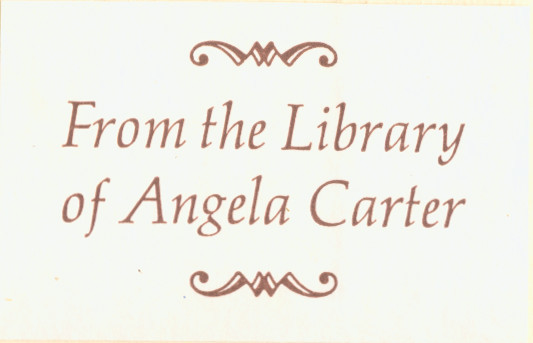
Angela Carter the Novelist.

One of the Prince Friedrich’s of Liechtenstein
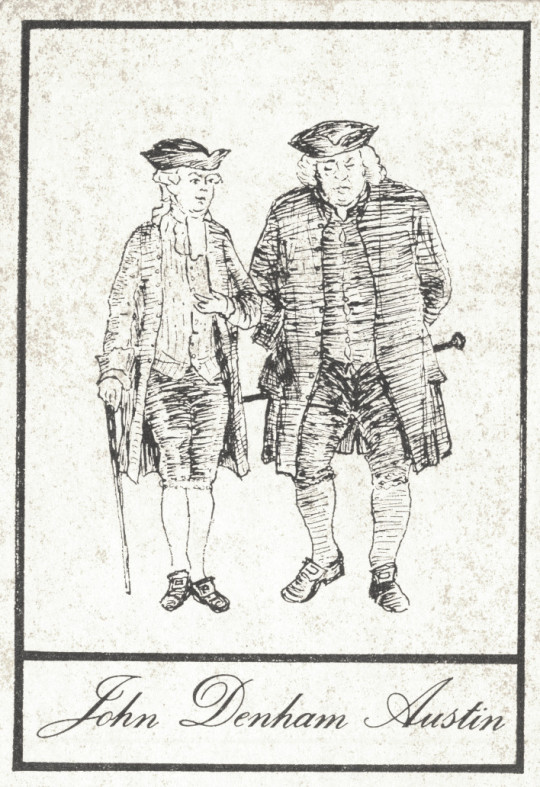
John Denham Austin, writer. Figures depicted are Samuel Johnson and James Boswell.
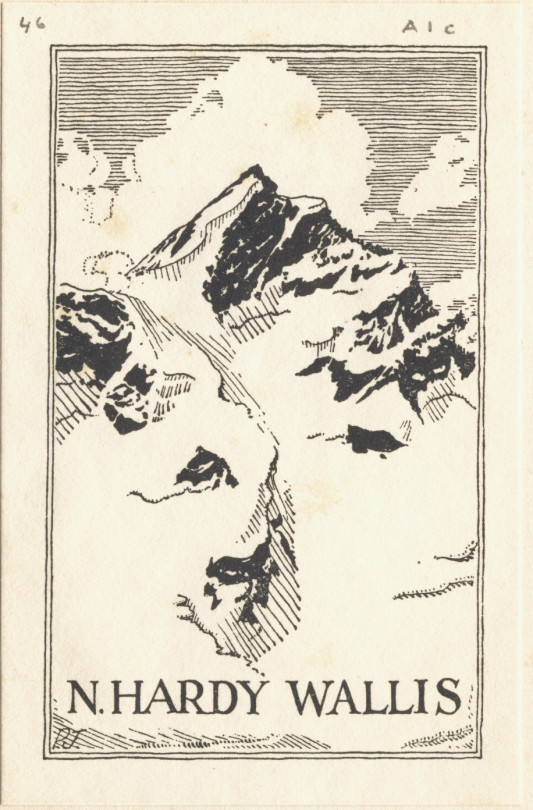
Norbert Hardy Wallis – Translator and writer.
2nd Lieutenant in the South Wales Borderers.
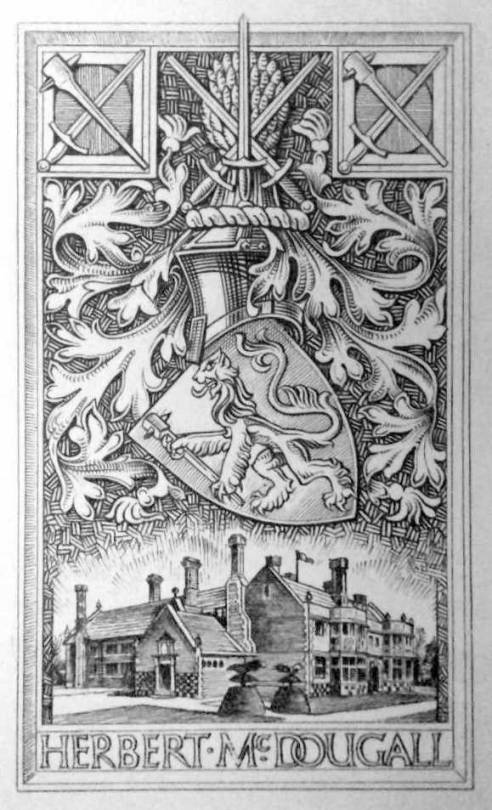
Lieutenant-Colonel Herbert McDougall, of the McDougall’s Flour company. His daughter married Prince Andrew Alexandrovitch of Russia, eldest nephew of Tsar Nicholas II.
John Piper on the South Bank Show, 1983
It covers his painting history and also features him painting at Covehithe in Suffolk before his exhibition at the Tate.
John Egerton Christmas Piper CH (13 December 1903 – 28 June 1992) was an English painter, printmaker and designer of stained-glass windows and both opera and theatre sets. His work often focused on the British landscape, especially churches and monuments, and included tapestry designs, book jackets, screen-prints, photography, fabrics and ceramics. He was educated at Epsom College and trained at the Richmond School of Art, followed by the Royal College of Art in London. He turned from abstraction early in his career, concentrating on a more naturalistic but distinctive approach, but often worked in several different styles throughout his career. He was an official war artist in World War II and his war-time depictions of bomb damaged churches and landmarks, most notably those of Coventry Cathedral, made Piper a household name and led to his work being acquired by several public collections. Piper collaborated with many others, including the poets John Betjeman and Geoffrey Grigson on the Shell Guides, and with the potter Geoffrey Eastop and the artist Ben Nicholson.